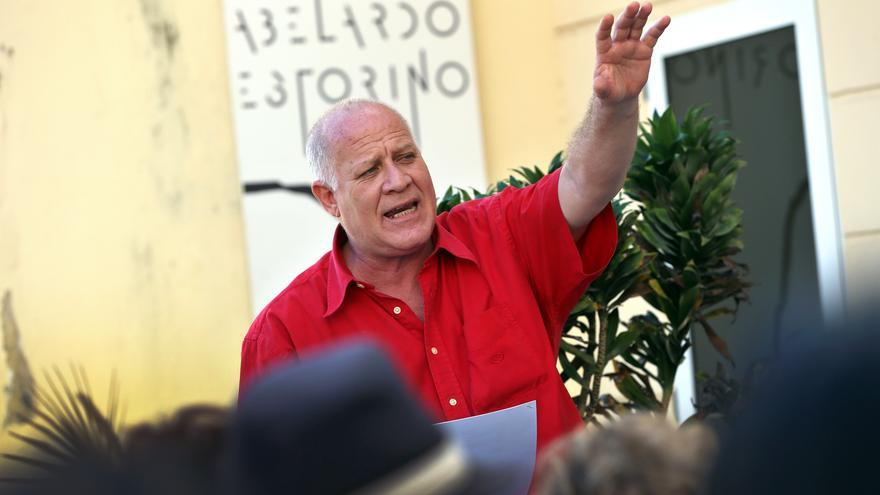
![]() 14ymedio, Luz Escobar, Havana, 8 February 2021 — The Hannah Arendt International Institute of Artivism (Instar), founded in Havana by the artist Tania Bruguera, has been selected to participate in the 15th edition of documenta, the prestigious contemporary art exhibition held in Kassel, Germany, currently scheduled for June 18 to September 25, 2022. On this occasion, the theme of the community of social art and the usefulness of art in society will be addressed.
14ymedio, Luz Escobar, Havana, 8 February 2021 — The Hannah Arendt International Institute of Artivism (Instar), founded in Havana by the artist Tania Bruguera, has been selected to participate in the 15th edition of documenta, the prestigious contemporary art exhibition held in Kassel, Germany, currently scheduled for June 18 to September 25, 2022. On this occasion, the theme of the community of social art and the usefulness of art in society will be addressed.
It is the second time that Bruguera has participated in this exhibition, having previously attended in 2011. On this occasion, her participation becomes even more relevant, if possible, due to the discrediting campaign launched against the artist by the Cuban government media and the harassment she has been subjected to on the part of State Security, which has prevented her from leaving her home under threat of arrest since 27 January, when a dozen artists were physically attacked by the Minister of Culture himself, Alpidio Alonso, while carrying out a peaceful sit-in in front of the official headquarters.
“This invitation should not be ignored by the Ministry of Culture, an institution with which we independent artists from Cuba are trying to have a dialogue in which our work is recognized and our spaces are legalized,” Bruguera explains to 14ymedio. It would not hurt for the ministry to see this, she says, as a sign that independent artists have “a force that is not in competition with the institution” and that they can “reach places of great prestige on their own.” continue reading
Tania Bruguera, whose work has always been critical of the regime, has been periodically harassed by the Government since December 2014, when she tried to organize a performance in the Plaza of the Revolution with the title of Tatlin’s Whisper #6, but the most recent attack began on November 27, when she was one of the most visible heads of the peaceful demonstration in front of the Ministry of Culture, where more than 300 artists and intellectuals demanded the freedom of those who were detained after their eviction from the headquarters of the San Isidro Movement, and the end of the persecution of artists.
Since then, Bruguera has been briefly arrested on several occasions and the official press has published articles dedicated to the artist, calling her a “mercenary” and accusing her of receiving financing from abroad, as is business as usual with regards to critical figures who acquire some relevance. On January 14, Bruguera filed a complaint at the Cuban Institute of Radio and Television (ICRT) in response to the broadcast of a program in which “they distorted, defamed and fostered negative opinions” about her, and she argued that a “government that is believed to be above the law and constantly violates the Constitution” must be fought.
“The best response that can be given to the defamation and attacks of the National Television Newscast and the official organ of the PCC is to let them know that today the inclusion of the Hannah Arendt International Institute of Artivism (#INSTAR) in documenta 15 has been announced, the most important exhibition of plastic arts in the world,” she wrote on her social networks after hearing the news of her selection to appear at the exhibition.
The artist believes that this decision is “the recognition of independent art in Cuba… I think it is not a celebration for Instar, it is a celebration for independent artists. It recognizes their need and relevance, and the impact they have,” she said. Instar has worked since its founding on civic education through art and has been a great supporter and promoter of independent artists.
The documenta exhibition is held every five years and includes a selection of between 80 and 100 artists from around the world chosen “for their quality and their track record.” This time the Indonesian group ruangrupa will be the artistic director for the exhibition. “It is something new because previously it had always been a chief curator who made the selection and for the first time a group has been chosen.”
“What the group has proposed is that this time the decisions will be made not by a single person, it is a little slower, but more democratic. All the people in the group, plus the team of curators, plus the other invited artists will be the ones who approve and vote and discuss the relevance of whether or not a project becomes part of the group. In this case I am happy to say that Instar was approved unanimously by all the jurors,” said Bruguera.
Instar’s participation in documenta, which has been in development now for a year and a half, also means that the artist is learning about other projects similar to those of her collective. “Exchanging ideas, experiences with similar projects of social art, political art, civic, learning and creating an international support network with other projects from the five continents,” she adds.
____________
COLLABORATE WITH OUR WORK: The 14ymedio team is committed to practicing serious journalism that reflects Cuba’s reality in all its depth. Thank you for joining us on this long journey. We invite you to continue supporting us by becoming a member of 14ymedio now. Together we can continue transforming journalism in Cuba.















